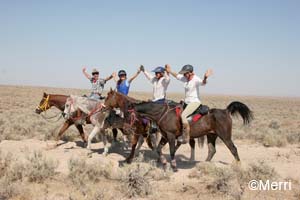
Monday May 23 2011
Less than a week till the 3-day Owyhee Fandango endurance ride and it's one thing after another: EHV-1 outbreak, cancellations, having to re-route trails because of too many cows out and high water, having to re-route trails because of cancellations and therefore not enough riders to pay for the extra vet we'd need at an out vet check, trail sabotage...
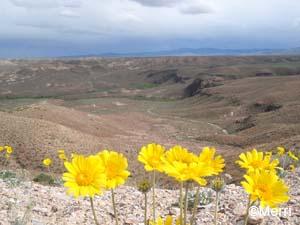
And Steph just got word this morning from the manager of the Sierra del Rio Ranch, where we often have a vet check and eat and rest in their lush grassy fields, and where we'd be riding through with a water stop on Day 3 this year, and who are normally happy to see us, said that on advice of their veterinarian, it was better if they didn't have horses coming through.
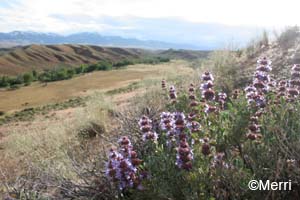
That decided it. Steph said, "There's no way I'm NOT having an endurance ride! I've never cancelled an endurance ride, and I'm not cancelling the Owyhee Fandango! If it's just us riding, then it's just us riding!"
Head veterinarian Robert Washington issued a sensible statement yesterday:
"The purpose of this post is to provide facts about EHV-1 and the current outbreak. I am not telling you to stay home nor am I telling you to go to this ride or other events. I am merely trying to provide correct current information on which everyone can make their own decision. It is amazing how fast information can get out and around via all of our technologies. The only down side of that, is there is a lot of misinformation swarming about the disease outbreak.
I will start with some information about the EHV-1 virus. Since it is a herpes virus, it can live dormantly in asymptomatic horses for a long period of time. These horses can spread the virus when stressed. This is the reservoir for the virus to persist. This virus has been known about for a long time, before if was found to be a herpes virus, it was called a rhino virus. Historically, symtoms caused by this virus are cough, nasal discharge, fever, abortion, and in a few cases, neurologic disease. Contrary to what some would have you believe, this virus is very common and is the cause of a lot of the "colds" horses can get from time to time. Over the last few years, a neurotropic strain of this virus has been identified, and this strain has caused a number of the outbreaks over the last 10 or so years.
So, this virus and disease syndrome are not some new "superbug". A percentage of horses carry this virus longterm. A study was done on thoroughbred broodmares, and 40-50% were found to be carriers. Again, this virus is very common. Most horses over 2 or 3 have seen the virus at some point in their lives. These outbreak situations occur with a shedding horse due to the stress of travel and showing, and exposure to a large population of horses. Horse shows and events are always a risk of disease transmission. Everything from flu, strangles, EHV and others can be spread in these gatherings of animals.
This virus is not very hardy outside of the horse. It can be kept alive in a laboratory situation for around 30 days. Under real conditions, that period is less than 7 days. It is killed very easily by 10% bleach solutions, common disinfectants, and alcohol (hand sanitizers). The virus can be spread up to 35-50 feet via aerosol under ideal conditions. The virus is only spread via nasal secretions. In reality, this virus is not spread as easily as some information would have you believe.
At this time, the cases from this outbreak (there is another separate outbreak in Florida) are confined to farms exposed to horses that were at the Ogden show. Yes, there are new cases, but they are still on the farms where horses returned from Ogden. In reality, the risk of an endurance horse that has not been at an infected facility to catch EHV-1 at an endurance ride is no greater than it ever is.
It is always advisable to observe your horse closely prior to travel. Take his or her temperature prior to leaving. If they have a fever, nasal discharge, cough, or "don't seem quite right", it is always recommended to not travel.
At this time, there are no travel restrictions. Wyoming and Colorado have changed their health certificate requirements, but are open to travel. At this time the Canadian border is open. I will have a health certificate book at the ride in case we need to write some for people to return home, and I will check travel requirements before offices close on Friday.
If you choose to come to the ride, I would ask that you monitor your horse closely. All horses will have their temperature taken as part of the pre-ride check. Given the nature of what endurance horses due, that will be the only time they will have their temperature taken, as I know they will get hotter than normal during the rides.
To end all this rambling, disease spread is always a risk in gatherings of horses. It is my opinion that the risk of your horse getting EHV at this or any ride are no more than they ever are."

Well said.
For us, we're still getting ready for the ride. It just means changing some trails to accommodate the situations. Which means more ATVing (for Steph), more riding and hiking for us to flag trails.
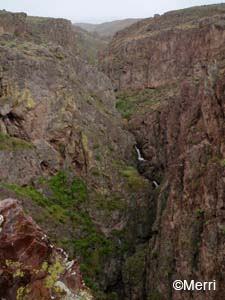
As if we needed any excuses to ride and hike around here. : )
(and PS - just before hitting the Publish button, Steph sent out an email saying we DO have permission to use the Sierra del Rio ranch now - the Petroglyph trail is back on for Sunday!)
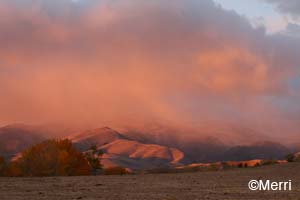
No comments:
Post a Comment